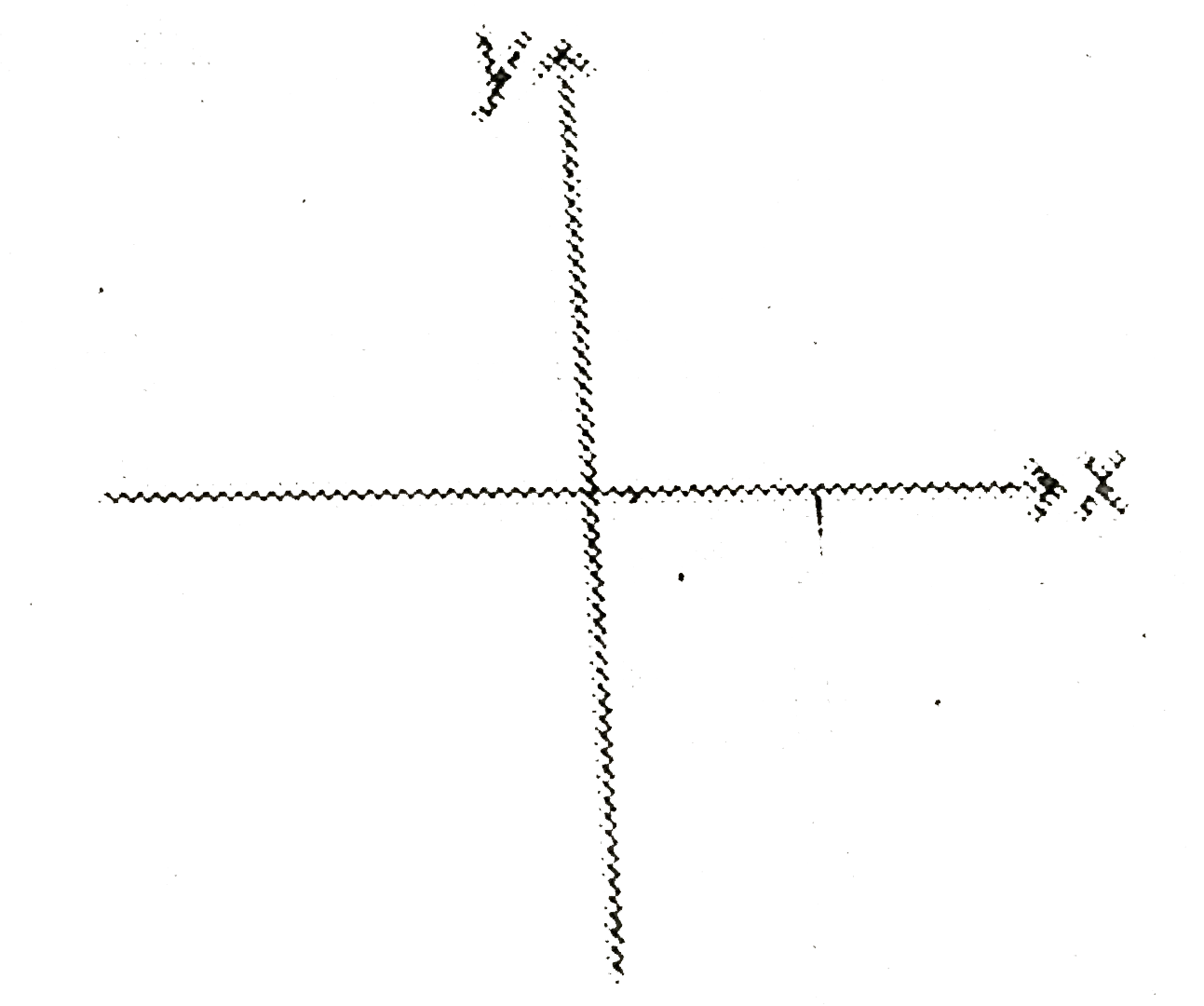A particle is performing S.H.M with accerlration a=8π2−4π2x where x is coordinate of the particle w.r.t the origin. The parameters are in S.I. units. The particle is at rest at x=−2 at t=0.
coordinate of the particle w.r.t origin at any time t is 2−4cos2πt
coordinate of the particle w.r.t origin at any time t is −2+4sin2πt
coordinate of the particle w.r.t origin at any time t is −4+2cos2πt
the coordinate cannot be found because mas of the particle is not given.
The correct Answer is:A
To solve the problem step by step, we will analyze the given acceleration equation and derive the position function of the particle performing Simple Harmonic Motion (SHM).
Step 1: Understand the acceleration equation
The acceleration of the particle is given by:
a=8π2−4π2x
Step 2: Rewrite the acceleration equation
We can factor out 4π2 from the acceleration equation:
a=4π2(2−x)
Step 3: Relate acceleration to SHM
In SHM, the acceleration a can also be expressed as:
a=−ω2x
where ω is the angular frequency.
Step 4: Identify the mean position
From the equation a=4π2(2−x), we can see that the acceleration is zero when x=2. This indicates that x=2 is the mean position of the SHM.
Step 5: Determine the extreme position
The particle is at rest at x=−2 at t=0. Since it is at rest at this position, x=−2 is an extreme position of the motion.
Step 6: Calculate the amplitude
The amplitude A of the SHM can be calculated as the distance from the mean position to the extreme position:
A=|2−(−2)|=4
Step 7: Write the general equation of motion
The general equation for the position x(t) in SHM can be expressed as:
x(t)=xm+Acos(ωt+ϕ)
where xm is the mean position, A is the amplitude, and ϕ is the phase constant.
Step 8: Substitute known values
Here, xm=2 and A=4. We need to determine ω and ϕ. From the acceleration equation, we can find ω2=4π2, thus:
ω=2π
Step 9: Determine the phase constant ϕ
At t=0, the particle is at x=−2:
−2=2+4cos(0+ϕ)
This simplifies to:
−2=2+4cos(ϕ)
−4=4cos(ϕ)
cos(ϕ)=−1
This implies ϕ=π.
Step 10: Write the final equation of motion
Substituting ω and ϕ into the equation of motion:
x(t)=2+4cos(2πt+π)
Using the property of cosine, cos(θ+π)=−cos(θ):
x(t)=2−4cos(2πt)
Final Result
Thus, the coordinate of the particle at any time t is:
x(t)=2−4cos(2πt)
---
The acceleration of the particle is given by:
a=8π2−4π2x
We can factor out 4π2 from the acceleration equation:
a=4π2(2−x)
In SHM, the acceleration a can also be expressed as:
a=−ω2x
where ω is the angular frequency.
From the equation a=4π2(2−x), we can see that the acceleration is zero when x=2. This indicates that x=2 is the mean position of the SHM.
The particle is at rest at x=−2 at t=0. Since it is at rest at this position, x=−2 is an extreme position of the motion.
The amplitude A of the SHM can be calculated as the distance from the mean position to the extreme position:
A=|2−(−2)|=4
The general equation for the position x(t) in SHM can be expressed as:
x(t)=xm+Acos(ωt+ϕ)
where xm is the mean position, A is the amplitude, and ϕ is the phase constant.
Here, xm=2 and A=4. We need to determine ω and ϕ. From the acceleration equation, we can find ω2=4π2, thus:
ω=2π
At t=0, the particle is at x=−2:
−2=2+4cos(0+ϕ)
This simplifies to:
−2=2+4cos(ϕ)
−4=4cos(ϕ)
cos(ϕ)=−1
This implies ϕ=π.
Substituting ω and ϕ into the equation of motion:
x(t)=2+4cos(2πt+π)
Using the property of cosine, cos(θ+π)=−cos(θ):
x(t)=2−4cos(2πt)
Thus, the coordinate of the particle at any time t is:
x(t)=2−4cos(2πt)
Topper's Solved these Questions
- SIMPLE HARMONIC MOTIONBOOK - ALLENCHAPTER - SIMPLE HARMONIC MOTIONEXERCISE - Exercise-02
19 Videos
- SIMPLE HARMONIC MOTIONBOOK - ALLENCHAPTER - SIMPLE HARMONIC MOTIONEXERCISE - Exercise- 3 Match The Column
1 Videos
- SIMPLE HARMONIC MOTIONBOOK - ALLENCHAPTER - SIMPLE HARMONIC MOTIONEXERCISE - Example
1 Videos
- RACEBOOK - ALLENCHAPTER - RACEEXERCISE - Basic Maths (Wave Motion & Dopplers Effect) (Stationary waves & doppler effect, beats)
25 Videos
- TEST PAPERBOOK - ALLENCHAPTER - TEST PAPEREXERCISE - PHYSICS
4 Videos
Similar Questions
A particle's trajectory is described by x=(12t3−2t2)m and y=(t2−2t)m, where t is in s. The speed of the particle at t=4s is:
View SolutionA particle is moving along the x-axis whose acceleration is given by a=3x−4, where x is the location of the particle. At t = 0, the particle is at rest at x=4/3m. The distance travelled by the particles in 5 s is
View Solution
Knowledge Check
A particle performing S.H.M. with the initial phase angle is π/2. Then the particle is at
Amaximum displacement positionBminimum energy positionCmaximum velocity positionDminimum accelerationA particle is performing SHM according to the equation x=(3cm)sin(2π18+π6), where t is in seconds. The distance travelled by the particle in 39 s is
A24cmB1.5cmC25.5cmDnone of theseThe coordinates of a particle moving in XY-plane very with time as x=4t2,y=2t. The locus of the particle is
AStraight lineBCircleCParabolaDEllipse
The coordinates of a particle moving in XY-plane vary with time as x=4t2,y=2t. The locus of the particle is a : -
View SolutionThe displacement of a particle performing a S.H.M. is given by x=12cos(ωt+α)cm. If at time t, the displacement of the particle is 6 cm, them the phase of the particle at that instant is
View SolutionThe displacement of a particle performing S.H.M. is given by x=10sin(ωt+α) metre. If the displacement of the particle is 5m, then the phase of S.H.M. is
View SolutionThe displacement of a particle in S.H.M. varies according to the relationx=4(cosπt+sinπt) . The amplitude of the particle is
View SolutionA xandy co-ordinates of a particle are x=Asin(ωt)andy=Asin(ωt+π/2). Then, the motion of the particle is

View Solution
